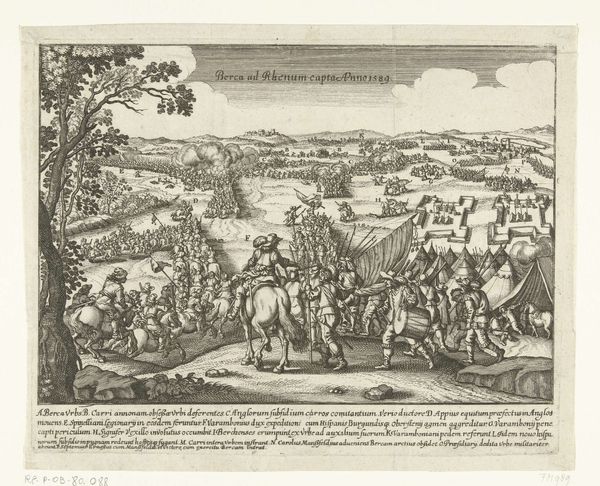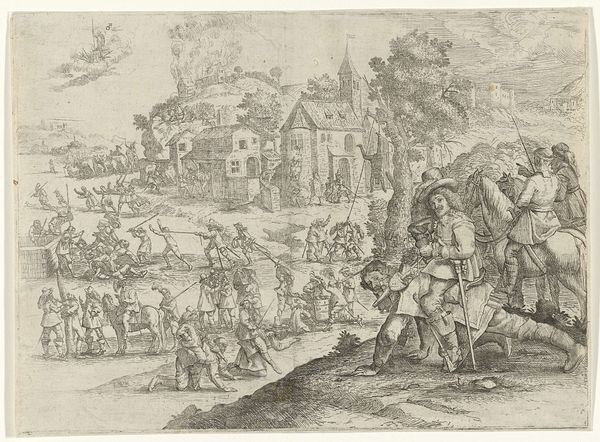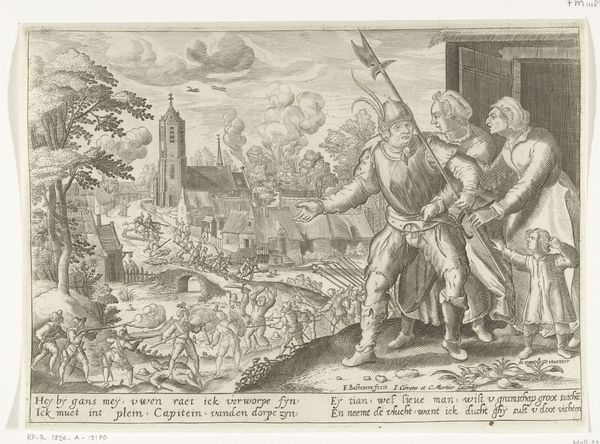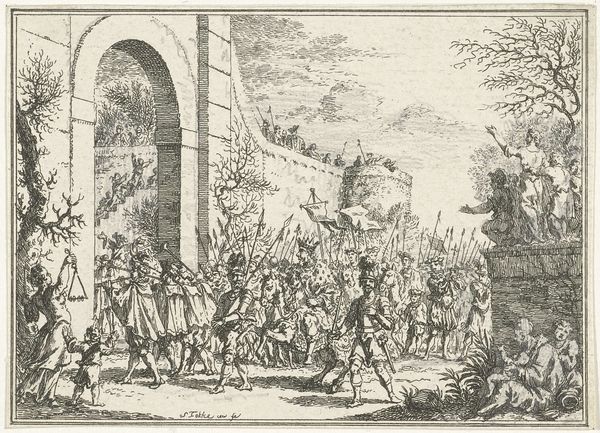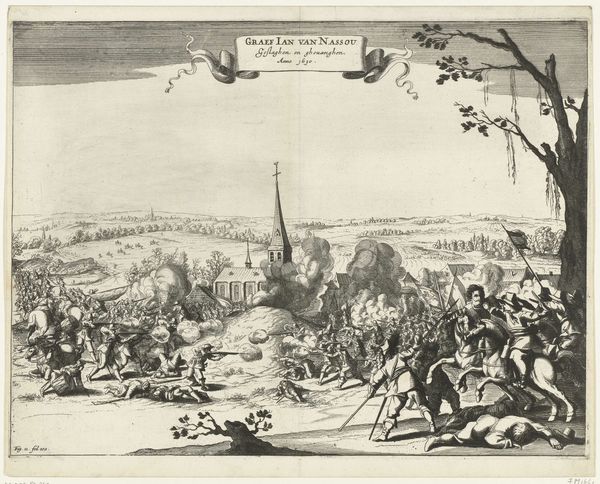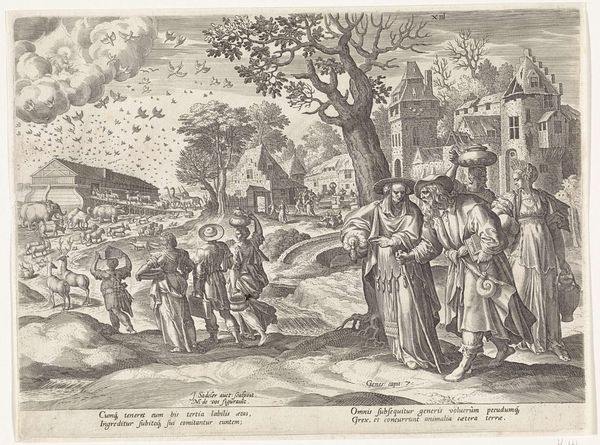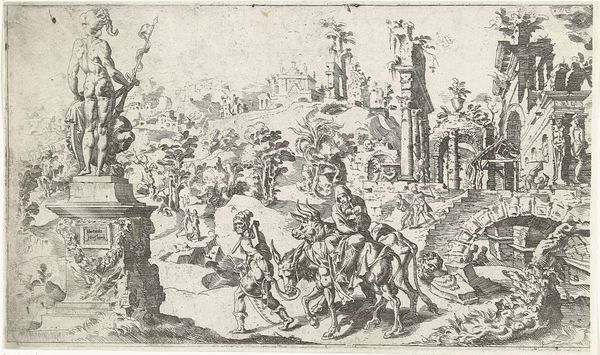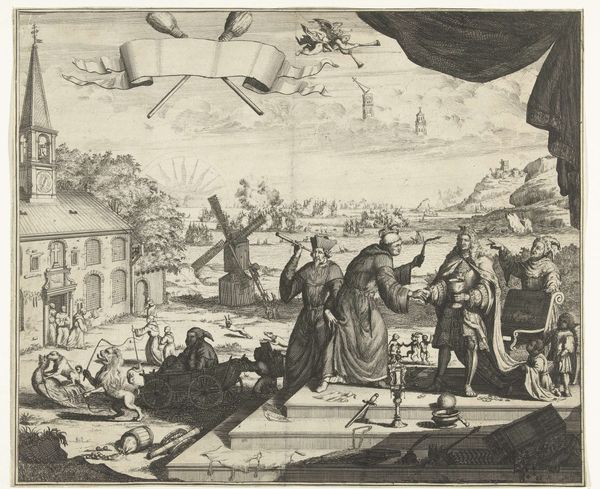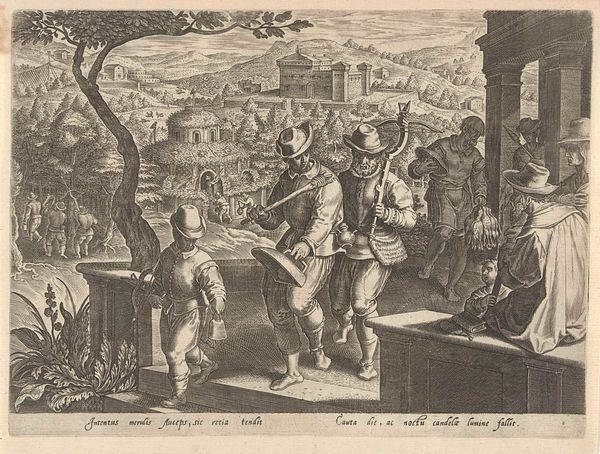
#
comic strip sketch
#
pen drawing
#
mechanical pen drawing
#
pen illustration
#
pen sketch
#
old engraving style
#
junji ito style
#
personal sketchbook
#
pen-ink sketch
#
pen work
Dimensions: height 134 mm, width 162 mm
Copyright: Rijks Museum: Open Domain
Curator: I'm struck by how cramped everything feels, even with that suggestion of landscape behind the main scene. Editor: You've nailed it. We're looking at "Don Juan Receives the Duke of Parma, 1578," a pen drawing made circa 1613-1615, attributed to an anonymous artist and held here at the Rijksmuseum. The use of line is so insistent, creating this almost claustrophobic feel despite the open-air setting of what appears to be some type of political negotiation. Curator: Political theatre at its finest! The Duke's procession into the building on the left looks stilted, staged almost. Are those captions part of the work, like a scene from a silent film? Editor: Exactly. There are little speech scrolls identifying "Don Juan," "Parma," and "Pe. van Parma". It's intended to provide clarity on the main figures participating in the actual event portrayed in this drawing. And notice the lines of Latin text too. It gives the feel of an important illustrated scene meant to disseminate particular information and portray the scene in a way that seems accurate but that is actually carefully constructed. Curator: And look at those figures on the left! Each face rendered with such individuality, such… scrutiny? They remind me of gargoyles observing some dark transaction. This medium, this level of detail – it's unsettling, somehow. Editor: I get that. The intense line work feels less about glorifying a historical event, and more about highlighting the tensions beneath the surface. Consider the strategic landscape too – those riders appear distant, detached, like instruments moving mechanically according to plans developed away from any actual conflict and action. Curator: Do you think that was the intention? To present a narrative fraught with unease? Editor: I think it captures, inadvertently or not, something about the political mood of the time. This image could stand for a broader social anxiety; about foreign intervention or any type of public spectacle where personal relationships actually determine policy making. It serves, in its own way, as both record and subtle critique. Curator: I see that tension so clearly now. It is more than just an historical account; it's an artifact loaded with perspective. Editor: Indeed. By analyzing pieces like this, we reveal history as it occurred, as it appeared in contemporary life, and finally, as it continues to have effects now.
Comments
No comments
Be the first to comment and join the conversation on the ultimate creative platform.
